Kodiak Daily Mirror – Joanne Snoderly
The Federal Aviation Administration’s Final Environmental Assessment has cleared the way for a new medium-lift launch pad at the Pacific Spaceport Complex, but the future of the project remains uncertain after state funding was placed on hold in late 2014.
The final EA comes after two draft assessments – one released in September 2014 and another released in December 2015. The final version includes responses to public comments on earlier drafts.
Many Kodiak residents and agencies took advantage of the public comment period to express concern over land access and the impact liquid rocket fuel could have on nearby bodies of water, plant and animal life, particularly in the event of another explosion like in August 2014.
Some residents spoke in favor of the project, citing the potential for economic stimulation for Kodiak and for student programs at the facility.
In an email following the release of the report, FAA environmental specialist Stacey Zee wrote, “The FAA has determined that the proposed federal action will not significantly affect the quality of the human environment and an Environmental Impact Statement is not necessary.”
The EA was commissioned after the state allocated $25 million for the additional launch pad in 2013. The launch pad would add the capacity to launch a heavier class of rockets.
Since then, the governor ordered a halt in discretionary spending, effectively stopping the project in its tracks for the time being.
Alaska Aerospace Corp., the state-owned corporation that operates the launch complex, returned $22 million to the state. The remaining $2.3 million in unspent funds currently sit unused.
The EA continued, as it was ordered before the spending halt.
“This took a little longer because it’s a very different mission that we’re going to be doing down there if we get to proceed with it,” said AAC CEO Craig Campbell. “It includes liquid fuel, as well as solid fuel, so the FAA did their due diligence in making sure the public and the agencies had adequate time to review it and comment, so it’s not surprising. It’s probably pretty normal for the complications of this review.”
Campbell has advocated privatizing AAC and said he hopes that, even without state funding, the medium-lift launch can come to fruition.
“We are interested in expanding into the medium-lift market if there are customers there that could provide the funding to make it earn money. That hasn’t materialized to date,” he said. “There are a lot of changes going on in the industry. There are new rockets being developed that provide different capabilities. I’m optimistic that in time we will see some changes down at Kodiak that will provide more launch opportunities, and that EA will be very helpful in allowing us to move forward.”
Campbell said there is no expiration date on the EA, as long as the changes do not go beyond the parameters of the study.
According to the assessment, those parameters include the launch stool, a flame trench, an access road, and a security gate and lighting. A water deluge system would be needed, as some of the medium-lift rockets require liquid fuel rather than the solid fuel used in the smaller rockets.
In addition to the actual launch pad, the project would include a vehicle processing facility, a rocket staging facility, a liquid fuel facility and a mission control center.
Curves would be straightened and dips flattened on the portion of Pasagshak Road within the launch complex.

